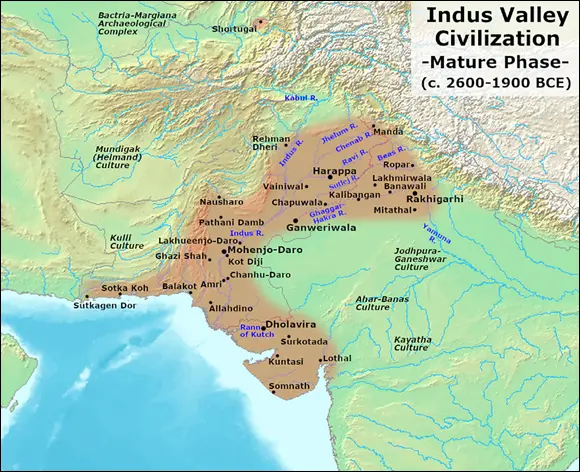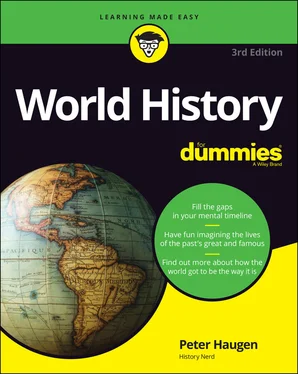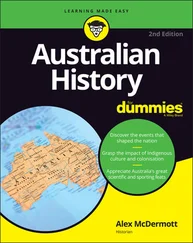Peter Haugen - World History For Dummies
Здесь есть возможность читать онлайн «Peter Haugen - World History For Dummies» — ознакомительный отрывок электронной книги совершенно бесплатно, а после прочтения отрывка купить полную версию. В некоторых случаях можно слушать аудио, скачать через торрент в формате fb2 и присутствует краткое содержание. Жанр: unrecognised, на английском языке. Описание произведения, (предисловие) а так же отзывы посетителей доступны на портале библиотеки ЛибКат.
- Название:World History For Dummies
- Автор:
- Жанр:
- Год:неизвестен
- ISBN:нет данных
- Рейтинг книги:3 / 5. Голосов: 1
-
Избранное:Добавить в избранное
- Отзывы:
-
Ваша оценка:
- 60
- 1
- 2
- 3
- 4
- 5
World History For Dummies: краткое содержание, описание и аннотация
Предлагаем к чтению аннотацию, описание, краткое содержание или предисловие (зависит от того, что написал сам автор книги «World History For Dummies»). Если вы не нашли необходимую информацию о книге — напишите в комментариях, мы постараемся отыскать её.
World History For Dummies,
For Dummies
World History For Dummies
World History For Dummies — читать онлайн ознакомительный отрывок
Ниже представлен текст книги, разбитый по страницам. Система сохранения места последней прочитанной страницы, позволяет с удобством читать онлайн бесплатно книгу «World History For Dummies», без необходимости каждый раз заново искать на чём Вы остановились. Поставьте закладку, и сможете в любой момент перейти на страницу, на которой закончили чтение.
Интервал:
Закладка:
Giving way as new civilizations rise
To the people of early civilizations, their cities must have seemed superior to rural villages and nomadic tribes (plenty of which still wandered the hinterlands), and incredibly powerful and secure. Yet the early civilizations, like every civilization since, faltered, splintered, succumbed, or evolved as political and military fortunes rose and fell.
A good example of an evolving civilization is Babylon, which grew into an empire around 1894 BC as King Sumuabum conquered surrounding cities and villages. His successor, Hammurabi, extended Babylon’s lands from the Persian Gulf to parts of Assyria before he died in 1750 BC. Babylon’s first empire (another arose 1,000 years later, and I talk about it later in this section) lasted almost 300 years. But in 1595 BC, a fierce neighboring people, the Hittites, conquered the city of Babylon and its lands.
The Hittite Empire spread across Asia Minor, encompassing a huge area of what are today central and eastern Turkey and extending into today’s Syria. Then, around 1200 BC, marauders smashed and burned Hittite cities so thoroughly that eventually, nobody remembered who had left carvings such as the twin lions flanking what must have been a grand ceremonial entrance. It took 19th- and 20th-century archaeologists to rediscover these once-mighty people.
The Hittites were major rivals, and later major allies, of Egypt. The two superpowers pitted their armies against each other at the Battle of Kadesh in Northern Syria in 1275 BC. A few decades later, the nations were at peace. Pharaoh Ramses II married a daughter of Hittite King Hattusilis III.
The Assyrians, a common enemy of the Hittites and Egyptians, built a great civilization too, centered on the upper Tigris River. Assyrians ruled much of Mesopotamia between 2600 and 612 BC. These people, or at least their rulers, appear to have been a bloodthirsty lot. Carvings on their palace walls feature scenes of enemies being beheaded. In Assyrian writings, kings boasted about how many captives they crucified, impaled, and skinned alive.
PERILS OF POWER
From the time Egypt became one nation, its increasingly powerful, ever-richer ruler also underwent a transformation. More than a man, the pharaoh was a living god.
Being a god wasn’t as great as it sounds, though — at least, not at first. Early kings of unified Egypt had to prove themselves fit to stay on top. A king who failed a rigorous annual physical challenge was considered no longer able to provide for the state and so was killed by priests in ritual sacrifice. Understandably, considering who made the rules, this practice disappeared by about 2650 BC.
Babylon emerged as the center of a new empire in the late seventh century BC, after the Chaldeans — a Semitic people related to Arabs and Jews — moved into the ancient city and conquered lands stretching to the Mediterranean. This territory was the empire ruled by Nebuchadnezzar II (605–562 BC), whose conquest of Jerusalem you can find in Chapter 20. The empire of Babylonia fell in the Persian conquest of 539–538 BC, but the city of Babylon remained an urban center for more than 200 years. (Alexander the Great died there in 323 BC.)
Heading east to the Indus and Yellow Rivers
Early civilization wasn’t limited to the lands around the Mediterranean. Just as the Tigris, Euphrates, and Nile rivers gave rise to cities, so the upper Indus River (in lands now divided between Pakistan and India) and the Yellow River in China provided ideal environments for villages to grow into cities in the East.
Plumbing the mysteries of ancient Indus Valley sites
The cities on the Indus River, including sites in modern Pakistan at places such as Harappa and Mohenjo-Daro, surprised archaeologists who found them for a couple of reasons:
As with the Hittite cities, nobody remembered, for a long time, that the Indus River cities had ever existed. Although the sites have been located, the origin of the people who built and lived there is still uncertain.
These communities of 2500 BC had streets laid out in a grid of rectangles, like New York City, and houses in Mohenjo-Daro boasted bathrooms and toilets with drains feeding into municipal sewers. Writings found among the ruins indicate that the Indus Valley was home to a literate society that probably spoke an early Dravidian language related to many languages still spoken in parts of South Asia.
At its height, the Indus civilization probably covered an area bigger than Mesopotamia and Egypt put together. (See figure 4-1). Mohenjo-Daro was rebuilt and rebuilt again over the course of what some scientists think were centuries of geologic change that plugged the Indus River, altered its course, and put successive layers of houses underwater. Others say that earthquakes and massive flooding ended the civilization around 1700 BC.

Avantiputra7 / Wikimedia Commons / CC BY SA 3.0
FIGURE 4-1:The Indus Valley Civilization was in what is now India and Pakistan.
Nomadic herding tribes from the Iranian plateau arrived in northwestern India around then as well, and they seem to have displaced the people of the Indus cities. Raiders eventually destroyed Mohenjo-Daro, by then in steep decline. The newcomers brought an Indo-European language (a distant ancestor of modern India’s Hindi, as well as English and many other tongues) and the roots of what became Indian religion and culture.
 Historians have used the term Aryan to mean the people who displaced the Indus River civilization and gave rise to later Indian culture, but Aryan is a widely misunderstood word because of the way German Nazis misused it to refer to light-skinned Caucasians. Properly applied, Aryan refers strictly to speakers of long-ago Indo-European languages; it has nothing to do with ethnicity or physical type.
Historians have used the term Aryan to mean the people who displaced the Indus River civilization and gave rise to later Indian culture, but Aryan is a widely misunderstood word because of the way German Nazis misused it to refer to light-skinned Caucasians. Properly applied, Aryan refers strictly to speakers of long-ago Indo-European languages; it has nothing to do with ethnicity or physical type.
PULLING PREHISTORY FROM A BRICK PILE
Harappa, perhaps the dominant city of the sophisticated Indus Valley Civilization, was a mess when archaeologists started picking through it in 1920, because 19th-century railroad builders had mined the site for bricks to build a roadbed. The engineers knew that the bricks were old, but they couldn’t have guessed that they were 4,000 years old. They left the hole in the ground, so local villagers helped themselves to the bricks too.
In 1922, two years after the scientists at Harappa began to understand what the site had been, an Indian archaeologist tackled another mound of brick rubble and river silt 400 miles away. He thought he’d found an abandoned Buddhist monastery. Instead, he unearthed the riches of Mohenjo-Daro, a virtually untouched ruin of great villas, public baths, and dazzlingly sophisticated sculpture. Since then, archaeologists have explored more than 150 Indus Valley sites.
Separating history from myth: China’s oldest dynasties
A river also runs through the beginnings of Chinese civilization: the powerful Yellow River. Around 4000 BC, people started farming (first millet and later rice) along this northernmost of China’s major rivers. Chinese legends attribute the nation’s origins to semimystical, demigod monarchs, including a Yellow Emperor of about 2700 BC, three “Sage Kings” or “August Rulers” (from 2350 BC), and a Hsia Dynasty that lasted until 1766 BC. Because historians have no proof that these figures are anything but legend, they credit the later house of Shang (also called Yin) as being the first dynasty to bring together warring Yellow River city-states in the 16th century BC.
Читать дальшеИнтервал:
Закладка:
Похожие книги на «World History For Dummies»
Представляем Вашему вниманию похожие книги на «World History For Dummies» списком для выбора. Мы отобрали схожую по названию и смыслу литературу в надежде предоставить читателям больше вариантов отыскать новые, интересные, ещё непрочитанные произведения.
Обсуждение, отзывы о книге «World History For Dummies» и просто собственные мнения читателей. Оставьте ваши комментарии, напишите, что Вы думаете о произведении, его смысле или главных героях. Укажите что конкретно понравилось, а что нет, и почему Вы так считаете.












